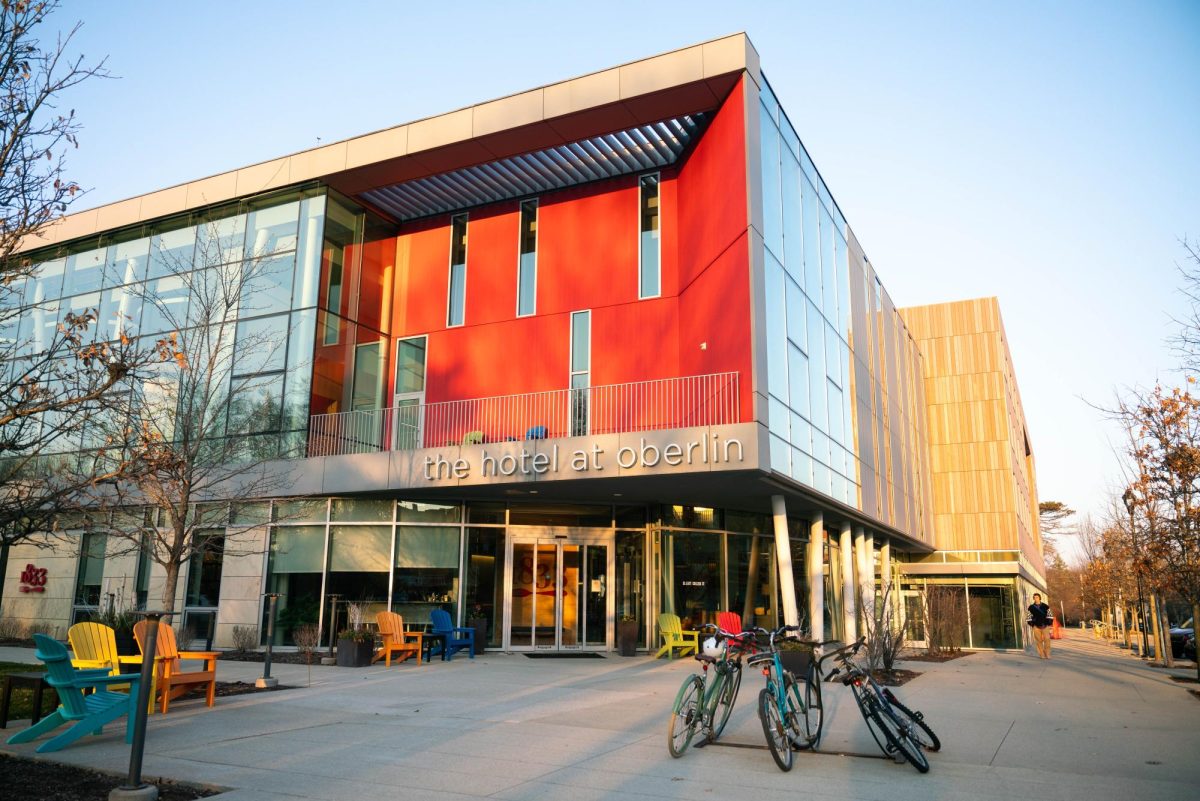Former President Nancy Dye Passes Away at 68

Nancy Dye, 13th president of Oberlin, passed away this week.
November 6, 2015
Nancy Schrom Dye, the first and only woman to serve as president of Oberlin College, died on Wednesday, Oct. 28, at her Lakewood home after battling a rare neurological syndrome. She was 68 years old.
Dye was the 13th president of the College, serving for more than a decade from 1994 to 2007.
During her presidency at Oberlin, Dye shaped the future of the College in a variety of ways. She was the head of the largest fundraising effort to date at Oberlin, raising $175 million in a capital campaign that funded new construction, financial aid and faculty salaries. She oversaw the construction of the $65 million Science Center and the Adam Joseph Lewis Environmental Studies Center. She also instituted the restoration efforts of Allen Memorial Art Museum.
Throughout her career, Dye made it her mission to bring students’ academic and social experiences to the forefront of College policy. Dye contributed to the creation of the Office of the Dean of Studies to enhance campus advising and academic intervention for students. She also worked for the welfare of minority students, forming partnerships with the Posse Foundation and QuestBridge in order to promote diversity in admissions.
“She was completely devoted to student welfare,” said Clayton Koppes, professor of History. “She was very empathic about how students are at Oberlin. She really believed that each individual had enormous potential. She wanted to eliminate any barriers that might prevent people from realizing that. She also believed that students and faculty should be challenged to achieve that potential.”
While striving to improve the College’s accessibility, Dye further expanded the College’s services to the town by creating the Bonner Center for Service and Learning. She also oversaw the creation of Oberlin’s William L. Robinson Scholars program, which grants full College tuition to admitted Oberlin High School graduates.
“No one had more character and integrity than President Dye,” said Wayne Meisel, former Bonner Foundation President. “Nancy [was] a champion of the Bonner Scholars Program and all that it stands for: access to education, commitment to low-income students, passion about community engagement and a desire to work together for our common cause.”
Dye continued to sustain Oberlin’s mission with her achievements overseas. In 2004 she became the first president of a U.S. college or university to visit Iran in over 25 years. While there, she worked to reestablish educational connections between Iran and the United States. In 2005, she was awarded an honorary Doctor of Letters degree from Obirin University in Machida, Japan.
“She was an outstanding leader, a fine scholar and teacher, a caring and engaged citizen of the world and a giving, kind person,” President Marvin Krislov said.
Dye graduated from Vassar College in 1969 and went on to earn her master’s and doctorate degrees in history at the University of Wisconsin, Madison. She focused her historical research on American women and workers and went on to author two books on the subject: As Equals and As Sisters: Feminism, Trade Unionism, and the New York Women’s Trade Union League and Gender, Race, and Class in the Progressive Era, the latter coauthored by Noralee Frankel.
“I have always admired her as a liberal thinker and principled feminist,” said Gabrielle H. Cody, professor of Drama at Vassar. “I thought her presidency at Oberlin was an amazing move for her. I will always think of her as a phenomenal example of a great public intellectual.”
Dye continued working in academia after leaving Oberlin, serving as the first Vice Chancellor of the Asian University of Women in Bangladesh and establishing a residential college for women at United Arab Emirates University.
She was born in Columbia, Missouri, daughter to Ned Stuart Schrom, dean of students at Montclair State University and SUNY News Paltz, and Florence Elizabeth Ahrens, former assistant to the dean of New York University Law School.
Dye is survived by her husband, Dr. Griffith Dye; their children, Molly and Michael; two granddaughters, Kennedy and Madeline; and her brother, Michael Schrom.
“She had a terrific sense of humor and she loved to laugh,” Dr. Griffith Dye said in an email to the Review. “She was incredibly curious. She believed in learning things, working hard, and making things better. She exhorted students to lead what she called ‘a generous life.’ She certainly made me a better person (although some may dispute this). And she often said that being president of Oberlin was the job that she loved the most.”
Contributions can be made to the Nancy S. Dye Scholarship Fund at Oberlin College in lieu of flowers.

























